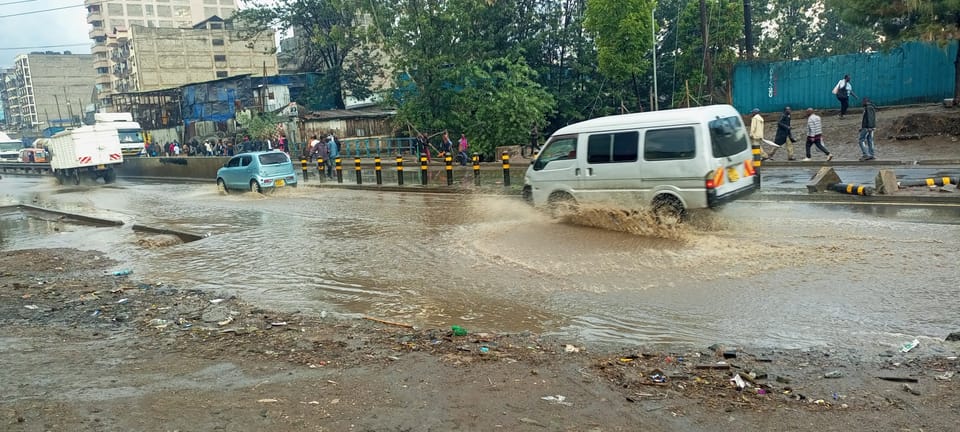Flood City: Nairobi's infrastructure crisis

Every time it rains heavily in Nairobi, residents brace themselves for the inevitable - flooded streets, damaged property, and disrupted lives. This recurring nightmare isn't just about heavy rainfall; it's a complex problem rooted in the city's aging infrastructure and rapid urban development.
At the heart of Nairobi's flooding crisis lies an outdated drainage system that dates back to the colonial era. Built when Nairobi was a smaller settlement, this system was designed to serve a fraction of today's population. Now, with over 4 million residents, the city's infrastructure is struggling to keep up with modern demands.
Recent events in Parklands highlight this challenge perfectly. The area experienced severe flooding due to a combination of blocked drainage systems and ongoing road construction. This incident serves as a microcosm of the larger issues facing Nairobi: poor waste management, illegal dumping, and insufficient infrastructure maintenance.
The county government isn't sitting idle. Plans are underway to implement modern drainage systems and regular maintenance schedules. More controversially, authorities are considering demolishing structures built on riparian land and waterways - a move that could affect numerous properties but might be necessary for long-term flood prevention.
However, infrastructure isn't the only challenge. Public behavior plays a crucial role. Illegal dumping and improper waste disposal frequently clog existing drainage systems, exacerbating flooding during heavy rains. To address this, the county government is planning public awareness campaigns focused on proper waste disposal practices.
The solution requires a multi-faceted approach: upgrading infrastructure, better urban planning, stricter enforcement of construction regulations, and improved waste management. Without addressing all these aspects, Nairobi's streets will continue to transform into rivers every rainy season.
As the city continues to grow and climate patterns become more unpredictable, the need for sustainable solutions becomes increasingly urgent. The question isn't whether Nairobi needs to adapt - it's how quickly these necessary changes can be implemented to protect its residents from future flooding disasters.
